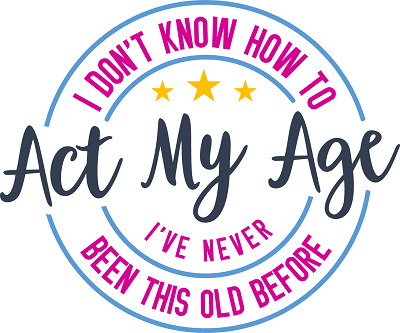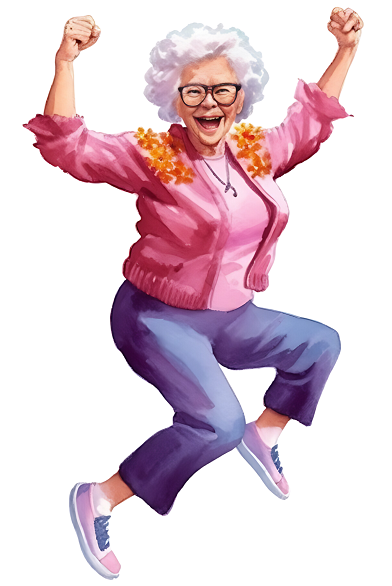 You can have high blood pressure and not even realize it. You may not have any outward symptoms, but inwardly, the condition is causing damage to your organs.
You can have high blood pressure and not even realize it. You may not have any outward symptoms, but inwardly, the condition is causing damage to your organs.
The blood pulsing through your arteries has a greater level of pressure when you have high blood pressure. This amount of pressure is what can cause your arteries to suffer damage.
You can develop thickening of the arteries, which is also known as hardening of the arteries. This higher level of pressure can also lead to aneurysms, heart failure, strokes, kidney damage, eye damage and fatal heart attacks.
You can take control of your high blood pressure so that this damage doesn’t have to occur!
Know Your Numbers
To stay on top of your blood pressure levels, you have to watch the numbers closely. You can track them by writing down what the readings are and checking those numbers on average.
If you have a couple of higher readings, this is not indicative of high blood pressure. High blood pressure is defined as long term higher readings rather than a couple of ones that aren’t normal.
This is one of the reasons that – if you have a higher than normal reading – your doctor will usually retest you. These numbers can fluctuate on a day to day basis and even throughout the day depending on certain factors.
Whether or not you’ve had any physical exercise before or after you’ve taken your numbers can influence the numbers you see. What kind of foods you’ve had to eat can be another factor that can have an impact on your blood pressure.
Drinking alcohol can cause a spike in the blood pressure readings. Having alcohol isn’t bad for you if you do have this condition – as long as you carefully control the amount that you do have.
While it’s okay to drink a glass of wine once or twice a week, more servings than that or overdoing any alcohol consumption raises your blood pressure. Having things in your life that cause you anxiety or other emotional turmoil can also make a difference in the numbers.
If you have long term stress in your life then you may also begin to notice that your numbers are consistently up. How you take care of yourself and what you put into your body can be the cause of not keeping your blood pressure levels within a healthy range.
Smoking when you have high blood pressure not only raises your level, but it also contributes to damaging your arteries. So if you have high blood pressure and you smoke, you’re doubling your risk of serious health consequences.
This is one of the reasons that doctors warn people who have high blood pressure to give up smoking. Blood pressure readings are categorized by normal, prehypertension, hypertension 1, hypertension 2 and critical.
In someone with normal blood pressure readings, the numbers are 120 or below for the top number and 80 or below for the bottom reading. If the range for the top falls between 120-139, then that person is said to be in prehypertension.
In this stage, the bottom number has also risen slightly but is still below 90. A person is defined as having hypertension level 1 when their top number reaches a range of 140-159 and their bottom number rises above 90 but is less than 100.
Level 2 hypertension is described as having a top number of greater than 160 with a bottom number of greater than 100. For blood pressure readings with a top number that’s over 180 and a bottom number that’s greater than 110, this is considered critical and the person needs immediate evaluation by a doctor.
The higher the blood pressure number, the greater the risk of health complications. To understand why it’s so important that you keep your blood pressure at a health level, you should know what the top and bottom numbers on the readings mean.
The top number is referring to your systolic reading and the bottom one means your diastolic reading. Your heart beats and then has a millisecond pause between the beats.
It’s so minute that you normally don’t even feel that pause. When your heart is beating, it’s pumping blood through your arteries and there’s pressure in the arteries from that pumping.
The systolic number tells you just how great that pressure is. This is the force being placed on your arteries. When your heart is pausing in those milliseconds, this is what the diastolic number is representing.
It’s letting you know how much pressure is in your arteries while your heart is paused. What is a normal reading for an adult may not be considered normal for a child.
What many pediatricians look at when checking a child’s blood pressure is the gender, the age and the height. Those numbers are then compared by percentile to see what percentage of height compared with blood pressure percentage the child falls under.
Anything above or below those guidelines are then given a closer look. A child’s normal blood pressure is slightly less than what’s considered normal for an adult. It wouldn’t be unusual to see a reading of 110/65 for a toddler and 115/75 for a school aged child.
For both men and women, the guidelines that doctors go by when deciding whether or not the blood pressure is at a healthy level is the recommended 120/80. However, numbers that vary by just a couple of points above that aren’t usually cause for any alarm.
Lower Your Blood Pressure through Better Nutrition
There are certain minerals in foods that can work to help keep your blood pressure lower. These minerals are potassium and magnesium. You want to eat foods that contain a lot of these minerals.
Foods such as spinach and potatoes are both examples of foods that are high in potassium and magnesium. Bananas, broccoli, grapes, oranges, peaches, squash and sweet potatoes are all packed with potassium and magnesium.
Blueberries are another food that helps to lower your blood pressure as do oatmeal and whole-grain cereals. If you check your blood pressure and you see that your numbers are high, you might want to grab a serving of beet juice.
Beet juice is known to lower the blood pressure because it contains nitrate. Carrots and cabbage are also a good source of nitrate. You might have heard that eating chocolate is bad for you.
But not in the case of high blood pressure – and not if it’s dark chocolate. Dark chocolate is great for people with high blood pressure because it has flavonoids, an ingredient that will bring those numbers down.
When you’re planning your meals, you do want to restrict your salt intake, because sodium raises your blood pressure. You can have what’s called salt-sensitive hypertension.
While potassium intake can counteract the way that sodium causes the blood pressure to rise, it’s best to keep your sodium levels lower when you have high blood pressure.
Using foods to keep your blood pressure lower means that you want your daily diet to consist of foods that are naturally lower in sodium. The highest amount of daily sodium intake you should have is no more than 1,500 mg.
Your diet should consist of plenty of whole grains, fruit, vegetables and lean meats. Your dairy foods should be low fat choices. You can have limited oils and fats and you can still have sugar in your diet as long as you watch the serving sizes and don’t overdo it.
You want to make sure that you read the labels of all the foods that you use. Some foods have such an effect on high blood pressure they should be avoided. Pickles are one of those foods because they’re packed with sodium.
Whenever you eat foods that have to be preserved through canning or in a jar, the sodium content of these products is usually going to be pretty high. You want to watch out for canned soups, since many of these are filled with sodium.
Regular bacon and deli meats aren’t good for you when you have high blood pressure. Frozen foods can pack enough sodium so that you go over your daily amount of sodium intake.
Many frozen foods contain 1,000 to 1,500 mg of sodium just in one serving. So check those levels before you buy the product. Some foods are okay alone, but when you add seasoning, they become sodium heavy.
One of these foods is Ramen noodles. The noodles alone aren’t bad for you if you have high blood pressure. But if add the packet of flavoring that comes with those noodles, it’s loaded with sodium.
Tomato based products can also have a bad effect on high blood pressure numbers. Tomato sauces, pastes and spaghetti sauces are among the culprits. If you’re used to drinking a lot of caffeine, you might want to cut back because caffeine can raise your blood pressure.
While this is a short-term effect directly related to the caffeine stimulant, chronic consumption can have an impact on your blood vessels.
Keep Your Numbers Low with Ample Exercise
If your levels are considered to be in the pre-hypertension range and you start a regular exercise routine, this may be able to prevent you from having the next stage of hypertension.
But if you’ve already been diagnosed with high blood pressure, then exercise can help you lower those numbers. The reason that exercise can help control high blood pressure is because exercise strengthens the heart muscle.
Your heart won’t work as hard when it pumps the blood. This is why athletes have lower heart rates than people who are not physically active. Their heart muscles don’t have to work as hard as a non-active person’s heart does.
If you’re active in any capacity, that can help your heart and will bring down your pressure levels. Even if you’re moving around your house doing housework or you’re out in the yard doing yard work, that can help lower your blood pressure.
One of the best ways to exercise when you want to lower your blood pressure is to take part in some type of aerobic exercise. Aerobic exercise can lower your blood pressure and help your heart get stronger.
You can start with easy kinds of aerobic exercise such as just walking. You can gradually add the distance that you walk. You can also swim or get involved with cycling.
Even using a stationary bike can help! You can jog or run or do other high-impact aerobics and those can impact your levels and bring the numbers lower. You don’t have to exercise every day in order to get the numbers within a healthy range.
However, you should commit to at least three days a week exercising for a minimum of 15-30 minutes a session to get the most benefit out of. If you’re not used to exercising and you’ve been diagnosed with high blood pressure, you’ll want to check with your doctor to make sure it’s safe for you start exercising and get his recommendation for how to structure the physical activity.
Going from not exercising to suddenly strenuously exercising is not good for those with high blood pressure. You have to gradually build up how strenuously you exercise to avoid the strain on your heart.
Use Natural Ways to Lower Your Blood Pressure
There are several ways that you can lower your blood pressure naturally. You can exercise, eat a diet that’s geared toward those who have high blood pressure and you can limit your salt.
You can make some lifestyle changes such as quitting smoking, limiting your alcohol and caffeine intake – and you can lose some weight if you’re out of shape. All of those will help.
But you can also learn stress management. Learning how to handle stress can lower your blood pressure because it can help relieve tension. You can take breaks whenever you need a mental time out.
Even if it’s five minutes, taking some time to gather your thoughts can help. You can assign the different areas of your life by order of importance and learn to deal with the important things and let go of what doesn’t matter.
You can also practice meditation. Many people find relief from high blood pressure by practicing meditation that involves deep breathing exercises and mentally freeing themselves from stress.
Transcendental meditation uses focus that can help center users and allows them to learn how to be free from thinking about things that can cause stress.
Any kind of meditation that’s reflective or relaxing can help. Some find relief by taking up yoga or other physical forms of meditation.
Serious Blood Pressure Concerns – When to Medicate the Issue
Sometimes, you can try very hard to bring the numbers you see down but nothing seems to change. If you see that your hypertension is consistently at the higher end of level one and hovers around 155/95, you need to see the doctor and get on medication.
Once your levels hit 159/99, you’re right on the brink of level 2 hypertension and your risks of complications go up. If you’ve been warned by your doctor that your numbers are currently putting you at risk of heart attack or stroke, then you’ll want to get on medication.
Using other means such as exercising and diet can sometimes control high blood pressure levels. But when those means aren’t working, you need to get on medication in order to prevent complications and damage to your body.
When you have other health conditions along with high blood pressure that can impact your heart or other organs, you’re at a higher risk of having a stroke or heart attack.
Getting on medication and getting your numbers lowered may be able to prevent you from having to deal with either of those issues. High blood pressure is nothing you should ignore.
It’s known as the silent killer for a reason – it creeps up on your, stealthily doing damage to your internal organs and by the time you are paying attention to the symptoms, it could be too late!


